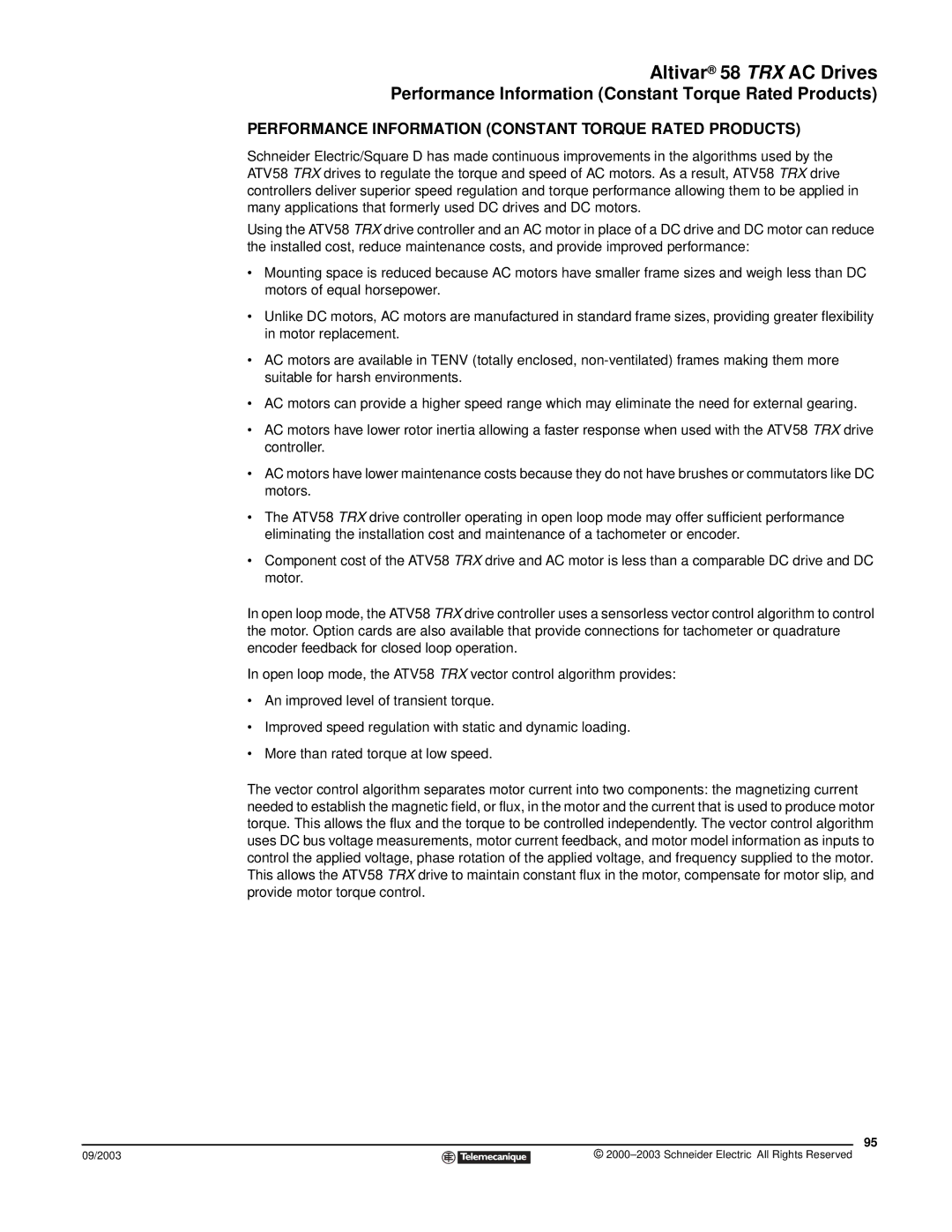Altivar® 58 TRX AC Drives
Performance Information (Constant Torque Rated Products)
PERFORMANCE INFORMATION (CONSTANT TORQUE RATED PRODUCTS)
Schneider Electric/Square D has made continuous improvements in the algorithms used by the ATV58 TRX drives to regulate the torque and speed of AC motors. As a result, ATV58 TRX drive controllers deliver superior speed regulation and torque performance allowing them to be applied in many applications that formerly used DC drives and DC motors.
Using the ATV58 TRX drive controller and an AC motor in place of a DC drive and DC motor can reduce the installed cost, reduce maintenance costs, and provide improved performance:
•Mounting space is reduced because AC motors have smaller frame sizes and weigh less than DC motors of equal horsepower.
•Unlike DC motors, AC motors are manufactured in standard frame sizes, providing greater flexibility in motor replacement.
•AC motors are available in TENV (totally enclosed,
•AC motors can provide a higher speed range which may eliminate the need for external gearing.
•AC motors have lower rotor inertia allowing a faster response when used with the ATV58 TRX drive controller.
•AC motors have lower maintenance costs because they do not have brushes or commutators like DC motors.
•The ATV58 TRX drive controller operating in open loop mode may offer sufficient performance eliminating the installation cost and maintenance of a tachometer or encoder.
•Component cost of the ATV58 TRX drive and AC motor is less than a comparable DC drive and DC motor.
In open loop mode, the ATV58 TRX drive controller uses a sensorless vector control algorithm to control the motor. Option cards are also available that provide connections for tachometer or quadrature encoder feedback for closed loop operation.
In open loop mode, the ATV58 TRX vector control algorithm provides:
•An improved level of transient torque.
•Improved speed regulation with static and dynamic loading.
•More than rated torque at low speed.
The vector control algorithm separates motor current into two components: the magnetizing current needed to establish the magnetic field, or flux, in the motor and the current that is used to produce motor torque. This allows the flux and the torque to be controlled independently. The vector control algorithm uses DC bus voltage measurements, motor current feedback, and motor model information as inputs to control the applied voltage, phase rotation of the applied voltage, and frequency supplied to the motor. This allows the ATV58 TRX drive to maintain constant flux in the motor, compensate for motor slip, and provide motor torque control.
95
09/2003 |
| © |
| ||
|
|
|
